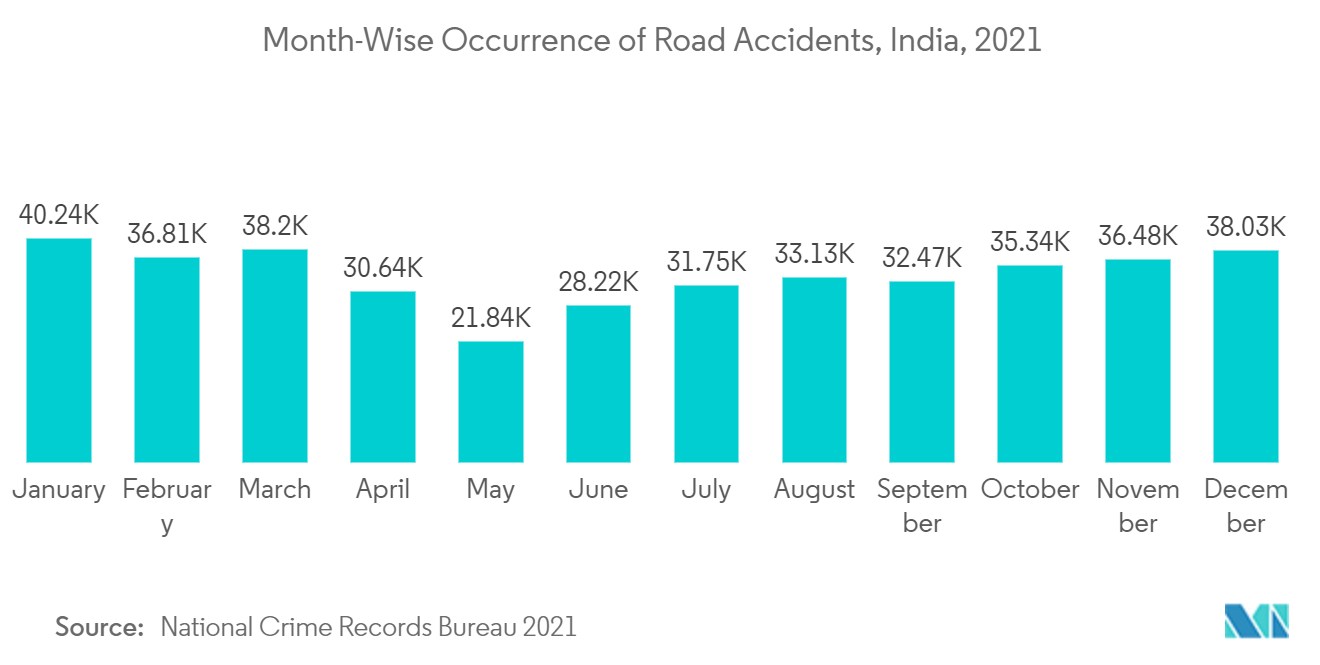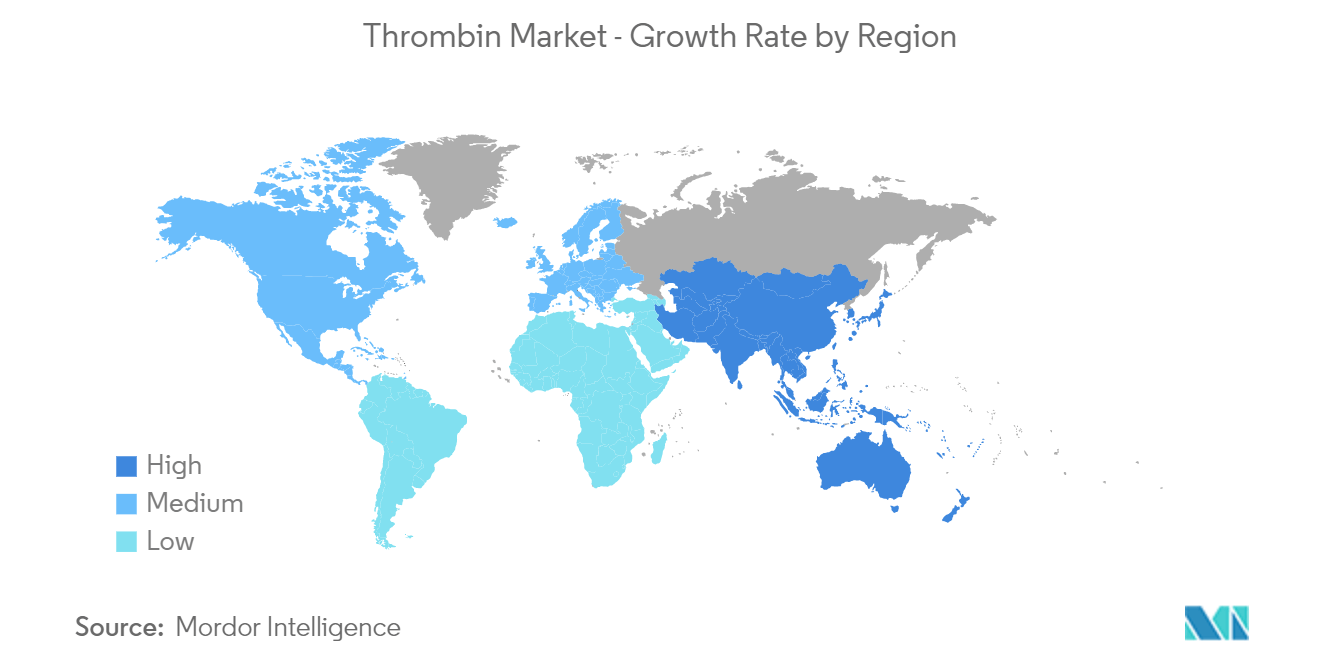Market Trends of Thrombin Industry
Hospital Segment is Expected to Hold a Significant Market Share Over the Forecast Period
- Hospitals are the primary care settings for diagnosing and treating a wide range of medical conditions, including blood loss-related injury disorders. The hospital segment is expected to witness growth in the market, driven by factors such as the growing burden of road accidents and the subsequent increase in injuries.
- For example, as per the French Road Safety Observatory 2022 update, the number of injury accidents recorded by police forces in Metropolitan France was 3,728 in January 2022, higher than the previous year's result (3,508 accidents). As the number of accidents and injuries increases, the demand for surgical procedures also rises, which is likely to boost market growth.
- Several research studies provide insights into the application of thrombin in various disorders, such as stroke. For instance, a research article published in February 2022 in the Nature Journal suggests that the thrombin-ACSL4 axis could be a significant therapeutic target to reduce ferroptosis neuronal destruction during ischemic stroke. Therefore, the hospital segment utilizes the advancements offered by thrombin therapy, which is expected to drive market growth over the forecast period.
- The government is also expected to significantly impact the growth of the hospitals and surgical centers segment. For instance, according to the December 2021 report of the Centers for Medicare and Medicaid Services (CMS), hospital expenditure in the country increased by 6.4% to USD 1,270.1 billion in 2020. Furthermore, in October 2021, Penn Medicine launched a new hospital, Pavillion, in the United States, which provides inpatient care for cardiology and cardiac surgery, medical and surgical oncology, neurology and neurosurgery, and transplant surgery.
- Overall, due to the increase in accident cases, the rise in funding for hospitals, and the use of thrombin in different surgeries, the hospital segment is expected to witness significant growth over the forecast period.

North America Dominates the Market and Expected to do Same in the Forecast Period
- North America is expected to maintain a significant share of the overall market throughout the forecast period, driven by several factors. The region's established healthcare infrastructure, the high prevalence of accidents and trauma, and the presence of key market players are some of the primary drivers of its large market share. Additionally, an increase in the prevalence of inherited blood disorders, such as hemophilia, is expected to contribute to the market growth in this region.
- According to the World Federation of Hemophilia 2021 report, the United States had approximately 11,790 patients with Hemophilia A and 3,026 patients with Hemophilia B in 2020. Similarly, Canada had 3,223 patients with Hemophilia A and 701 patients with Hemophilia B in the same year. This high number of hemophilia cases in these regions is expected to boost the demand for hemophilia therapies, leading to market growth.
- Furthermore, the market is expected to grow due to beneficial government initiatives and an increase in research partnerships. The United States, in particular, has a significant share in the market due to its supportive healthcare policies, a developed healthcare market, and a high number of patients. According to the Centers for Disease Control and Prevention (CDC), there were 130 million emergency department visits and 35 million injury-related visits in the United States in September 2022. The high number of emergency visits is expected to increase the adoption of thrombin in the United States, thereby driving the growth of the studied market.
- In conclusion, the rise in the prevalence of inherited blood disorders and the increase in the number of emergency visits due to injury-related cases are expected to drive market growth in North America over the forecast period.


